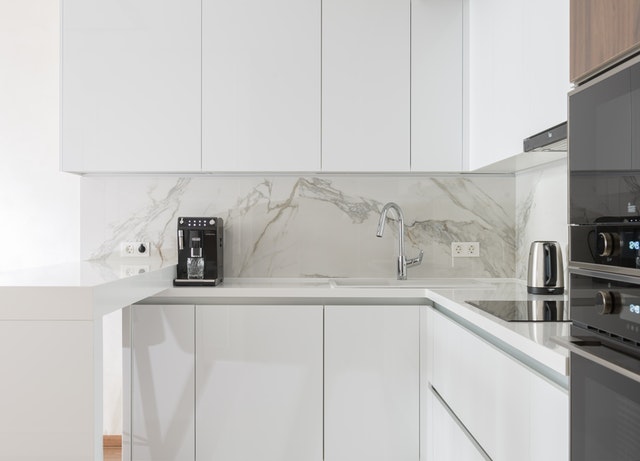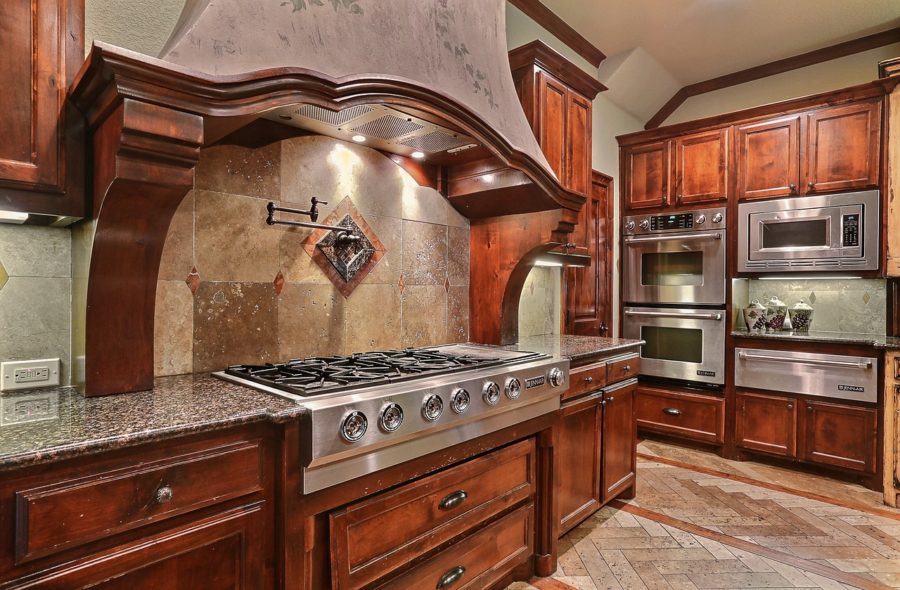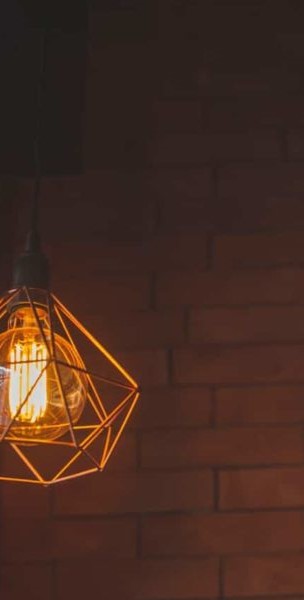
Adding a backsplash to the kitchen wall is a fantastic way to add style, functionality, and colour to your dream kitchen; but they can be a highly personal decision to make while planning out your space. Think about every single time you enter the kitchen – during a midnight snack binge, or for your morning coffee, or when you get home from work every day; the kitchen has to look great if you’re going to live with it for the next decade or two.
Style aside, your backsplash has to be functional – and that means protecting your walls above the sink and stove by eliminating the threat of spills, splashes, stains, and damage caused by moisture and heat.
Next to the cabinets and the countertops, the backsplash is a competitor in the race for ‘biggest kitchen focal point.’ It’s a bold choice that should never be made too hastily, but overthink it and you could end up with something that’s made to impress the neighbours, your friends, or potential buyers. Selecting the backsplash should be all about you, and how you envision the pace connecting, coming together, and developing its own identity.
In this post, we’re telling you everything you need to know about kitchen backsplashes.
Ceramic Tile

The chameleon of the backsplash arena, classic porcelain or ceramic tile can be whatever your kitchen needs it to be. Ceramic tile is available in a multitude of sizes, styles, finishes, and colours – making it a shapeshifter of timeless style and proven durability.
Ceramic options can both be playful and bold, and neutral and classic – and some even come with bevelled edges to accent their aesthetic appeal, thanks to their everlasting popularity. Being relatively inexpensive and easy to work with helps maintain the elevated stature of ceramic tile as a backsplash solution.
Herring Bone
More of an installation pattern than a tiles style itself, herringbone installation design helps to elevate and exemplify the possibilities of ceramic tile and is reminiscent of a parkette floor in an old art deco building, or – the bones of a herring fish. It gets its lasting style from Roman roadmakers in ancient times and was carried over to structural and interior design work in Europe, Asia, and North America.
If most of your kitchen is white to reflect a crisp, modern appeal – changing things up with a complimentary, yet eye-grabbing herringbone design as a backsplash pattern is a great way to pull attention to the finer details in the space, helping create a curated aesthetic
Glass Tile
Less classic and more upbeat, urban, and modern, glass tile backsplashes help bring a reflective quality to the kitchen and brighten up the space, both with light and energy. Coloured glass tile is a popular choice to a flat ceramic tile, and helps to maximize the impact of reflective colour.
As a bonus, glass tile is extremely easy to maintain and care for: glass is non-porous so it never needs to be sealed, protected, or treated – simply wipe down with your cleaner of choice, and you’re good to go.
The only downside may be its hot/cold trendiness – glass tile backsplashes popularity comes and goes – they’ve enjoyed the limelight for a year or two now – and we’d predict that the trend will taper off and make way to some of the upcoming design ideas in this post before returning to its grandeur sometime down the road.
Marble & Stone

Visually, there’s little that can compete with the aesthetic appeal of a stone backsplash in the kitchen. Something about the contrast between the extensively engineered construction of a kitchen with the natural, organic energy of stone creates a truly inspiring juxtaposition – but that lavish vibe can come with a price – your time and effort in maintaining them over time.
Stone is porous, so it will absorb moisture, oils, and food splatter as they happen in the kitchen, and the uneven natural surface is often craggy and difficult to wipe clean. Second, stone, whether that be a slate, marble, granite or stone veneer, will need to be sealed at least once per year to help minimize the damaging effects of moisture absorption.
But there’s also a bonus to that minor negative – stone doesn’t require grouting, so you save a step in the installation process, and benefit from a very clean cut and visually pleasing look.
Travertine Tile
Old world kitchen lovers, unite! Travertine tile is a natural limestone tile that’s a much lighter, more natural looking material to work with than a manufactured ceramic tile or glass tile.
Reminiscent of old-world Italy, Spain, or France, the visual splendour of a travertine backsplash is highly desirable, but that sought-after stature means it’s not a cost-effective choice; be prepared to break out that pocketbook. Also, as it’s a stone material, travertine tile needs regular sealing to prevent and minimize damage from moisture and spills.
Thermoplastic
Thermoplastic or faux-metal backsplashes look great, are cheap, easy to maintain, and easy to install. The panels are manufactured in a variety of textures, colours, and styles, making them adaptive and easily pairable to your kitchen plans, and the panels themselves are typically cut to perfectly fit an 18.5” high dimension (the exact space typically found between a counter and overhead cabinetry. Talk about simple!
So what’s the downside to this choice? Well, they’re fake and inexpensive, and you tend to always get what you pay for. Corners can reveal the falsity of the thermoplastic approach, and despite a fire-resistant designation, most thermoplastic panels will end up deforming and shifting shape over time when exposed to heat, so they shouldn’t be installed behind a stove or gas range.

Metal
A crisp, metallic, and modern kitchen can be tough to pair with organic or natural materials – and traditional metal backsplashes were usually made from corrugated or stamped tin ceiling panels – and although the nostalgic and time-honoured aesthetic is still desirable today, it lacks that ultra-modern visual cue some homeowners are looking for.
Cue brushed aluminum, or stainless steel. This ultra-slick and vibrant material is an ideal backsplash for industrial-inspired kitchen space and can be found in large panels, or small individual metal tile to mimic the look and installation pattern of subway tile. These materials are easily installed with mastic or thin-set cement
Grout
Grout
Grouting is more than likely going to be the way your backsplash is installed. When using ceramic tile – by far the most popular backsplash material – grout is the mortar used to fill the spaces between the wall or floor tile. It hardens in an approximately 24-hour cycle and holds your tile in place. But there is a lot to consider when selecting grout for your own DIY project, or for your contractors.
Grout comes in four main forms:
- Pre-mixed
- Dry
- Sanded
- Non-sanded
For simplicity sake, and for ease of use – pre-mixed sanded grout is typically the go-to material. Think of sand in the grout as a critical hardener that will help protect and maintain an excellent hold on your tile backsplash.
Sanded grout is used where the tile is expected to encounter a load of wear and tear, like a floor or shower tile. Backsplashes can swing either way, but if your kitchen is your second home and you love to cook up a storm, go for the sanded grout to ensure you’re covered.
Grout comes in a variety of colours to help blend your tile together, or accentuate the gaps in between the tile itself, so pay close attention to the aesthetic you have in mind, and consult a multitude of reference material before finishing off the backsplash choices – it’s very tough to get off once it’s dry.
A true jack-of-all-trades, the kitchen backsplash is much like a luxury SUV – it’s got to look the part of a luxury car, but it also needs the capability to veer offroad every now and then – beauty and brawn, compiled into once package.
Doing your homework and investigating the nearly innumerable varieties of kitchen backsplash materials, layouts, patterns, and installation techniques is all about finding what you love, and what you don’t – and weighing the pros and cons of each to narrow down your choices. This is your dream space, after all – no one can tell you what you love except you!